Michael Krause
Michael Pokorny
Humanity's Last Exam
Jan 24, 2025Abstract:Benchmarks are important tools for tracking the rapid advancements in large language model (LLM) capabilities. However, benchmarks are not keeping pace in difficulty: LLMs now achieve over 90\% accuracy on popular benchmarks like MMLU, limiting informed measurement of state-of-the-art LLM capabilities. In response, we introduce Humanity's Last Exam (HLE), a multi-modal benchmark at the frontier of human knowledge, designed to be the final closed-ended academic benchmark of its kind with broad subject coverage. HLE consists of 3,000 questions across dozens of subjects, including mathematics, humanities, and the natural sciences. HLE is developed globally by subject-matter experts and consists of multiple-choice and short-answer questions suitable for automated grading. Each question has a known solution that is unambiguous and easily verifiable, but cannot be quickly answered via internet retrieval. State-of-the-art LLMs demonstrate low accuracy and calibration on HLE, highlighting a significant gap between current LLM capabilities and the expert human frontier on closed-ended academic questions. To inform research and policymaking upon a clear understanding of model capabilities, we publicly release HLE at https://lastexam.ai.
LONEStar: The Lunar Flashlight Optical Navigation Experiment
Jan 22, 2024Abstract:This paper documents the results from the highly successful Lunar flashlight Optical Navigation Experiment with a Star tracker (LONEStar). Launched in December 2022, Lunar Flashlight (LF) was a NASA-funded technology demonstration mission. After a propulsion system anomaly prevented capture in lunar orbit, LF was ejected from the Earth-Moon system and into heliocentric space. NASA subsequently transferred ownership of LF to Georgia Tech to conduct an unfunded extended mission to demonstrate further advanced technology objectives, including LONEStar. From August-December 2023, the LONEStar team performed on-orbit calibration of the optical instrument and a number of different OPNAV experiments. This campaign included the processing of nearly 400 images of star fields, Earth and Moon, and four other planets (Mercury, Mars, Jupiter, and Saturn). LONEStar provided the first on-orbit demonstrations of heliocentric navigation using only optical observations of planets. Of special note is the successful in-flight demonstration of (1) instantaneous triangulation with simultaneous sightings of two planets with the LOST algorithm and (2) dynamic triangulation with sequential sightings of multiple planets.
Retail Analytics in the New Normal: The Influence of Artificial Intelligence and the Covid-19 Pandemic
Nov 27, 2023Abstract:The COVID-19 pandemic has severely disrupted the retail landscape and has accelerated the adoption of innovative technologies. A striking example relates to the proliferation of online grocery orders and the technology deployed to facilitate such logistics. In fact, for many retailers, this disruption was a wake-up call after which they started recognizing the power of data analytics and artificial intelligence (AI). In this article, we discuss the opportunities that AI can offer to retailers in the new normal retail landscape. Some of the techniques described have been applied at scale to adapt previously deployed AI models, whereas in other instances, fresh solutions needed to be developed to help retailers cope with recent disruptions, such as unexpected panic buying, retraining predictive models, and leveraging online-offline synergies.
Anisotropic Diffusion Stencils: From Simple Derivations over Stability Estimates to ResNet Implementations
Sep 13, 2023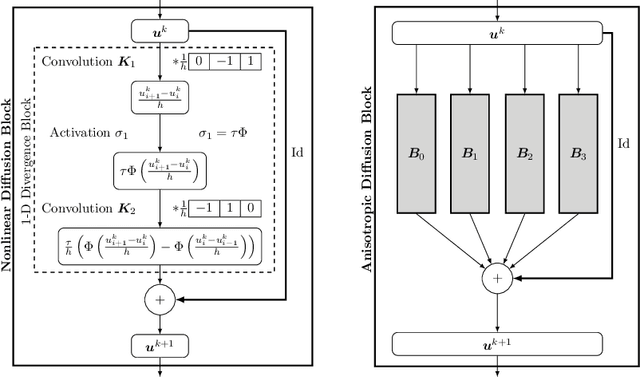
Abstract:Anisotropic diffusion processes with a diffusion tensor are important in image analysis, physics, and engineering. However, their numerical approximation has a strong impact on dissipative artefacts and deviations from rotation invariance. In this work, we study a large family of finite difference discretisations on a 3 x 3 stencil. We derive it by splitting 2-D anisotropic diffusion into four 1-D diffusions. The resulting stencil class involves one free parameter and covers a wide range of existing discretisations. It comprises the full stencil family of Weickert et al. (2013) and shows that their two parameters contain redundancy. Furthermore, we establish a bound on the spectral norm of the matrix corresponding to the stencil. This gives time step size limits that guarantee stability of an explicit scheme in the Euclidean norm. Our directional splitting also allows a very natural translation of the explicit scheme into ResNet blocks. Employing neural network libraries enables simple and highly efficient parallel implementations on GPUs.
Stabilizing Training with Soft Dynamic Time Warping: A Case Study for Pitch Class Estimation with Weakly Aligned Targets
Aug 10, 2023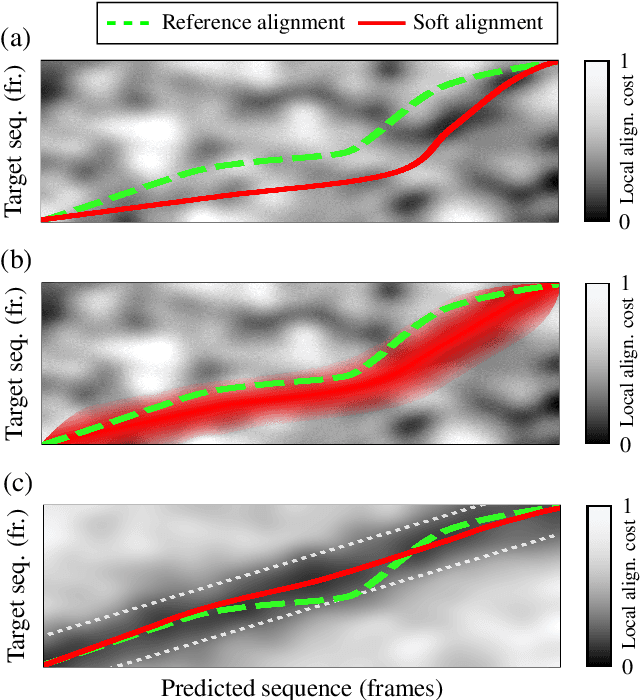
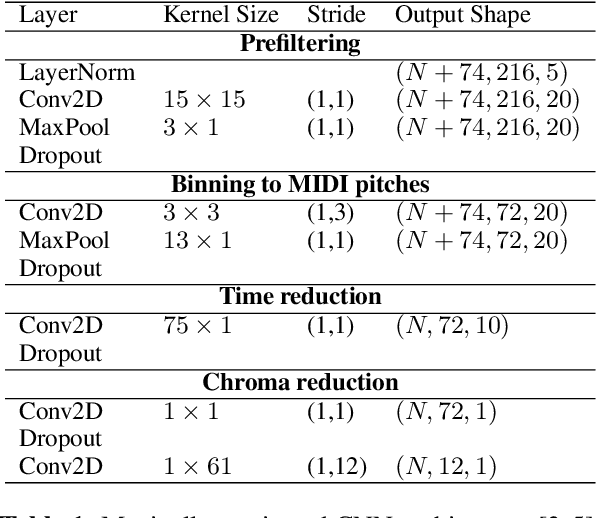
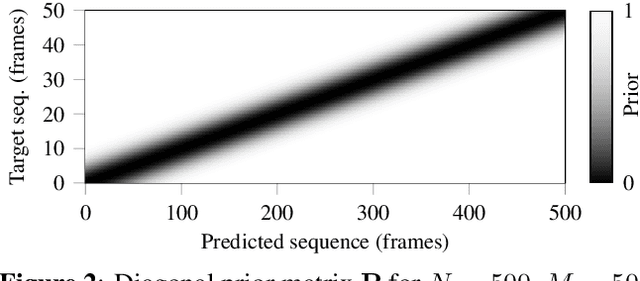
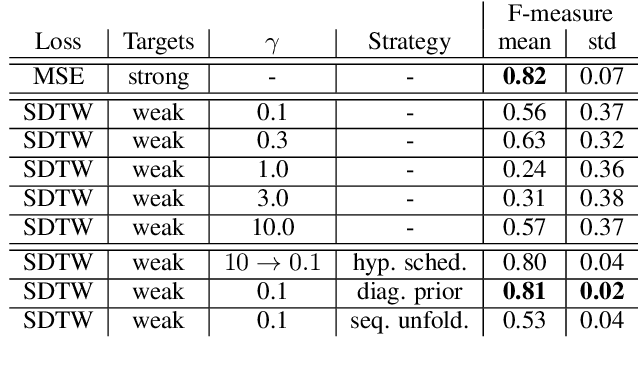
Abstract:Soft dynamic time warping (SDTW) is a differentiable loss function that allows for training neural networks from weakly aligned data. Typically, SDTW is used to iteratively compute and refine soft alignments that compensate for temporal deviations between the training data and its weakly annotated targets. One major problem is that a mismatch between the estimated soft alignments and the reference alignments in the early training stage leads to incorrect parameter updates, making the overall training procedure unstable. In this paper, we investigate such stability issues by considering the task of pitch class estimation from music recordings as an illustrative case study. In particular, we introduce and discuss three conceptually different strategies (a hyperparameter scheduling, a diagonal prior, and a sequence unfolding strategy) with the objective of stabilizing intermediate soft alignment results. Finally, we report on experiments that demonstrate the effectiveness of the strategies and discuss efficiency and implementation issues.
Soft Dynamic Time Warping for Multi-Pitch Estimation and Beyond
Apr 11, 2023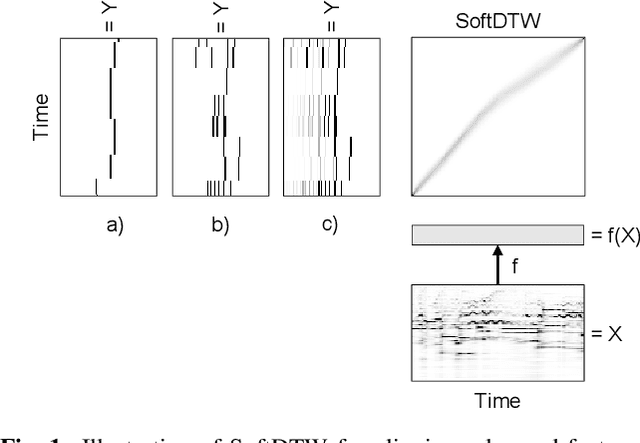
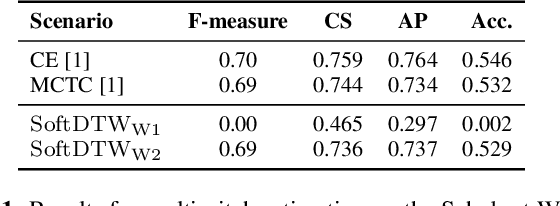
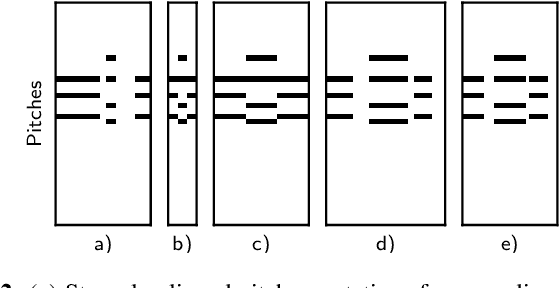

Abstract:Many tasks in music information retrieval (MIR) involve weakly aligned data, where exact temporal correspondences are unknown. The connectionist temporal classification (CTC) loss is a standard technique to learn feature representations based on weakly aligned training data. However, CTC is limited to discrete-valued target sequences and can be difficult to extend to multi-label problems. In this article, we show how soft dynamic time warping (SoftDTW), a differentiable variant of classical DTW, can be used as an alternative to CTC. Using multi-pitch estimation as an example scenario, we show that SoftDTW yields results on par with a state-of-the-art multi-label extension of CTC. In addition to being more elegant in terms of its algorithmic formulation, SoftDTW naturally extends to real-valued target sequences.
MOTS: Multi-Object Tracking and Segmentation
Apr 08, 2019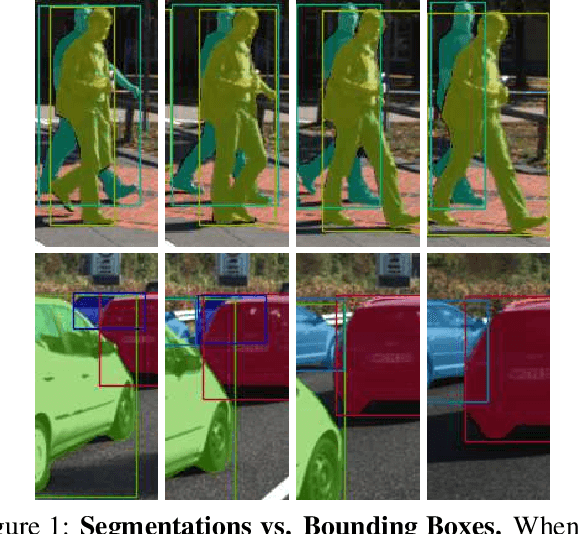
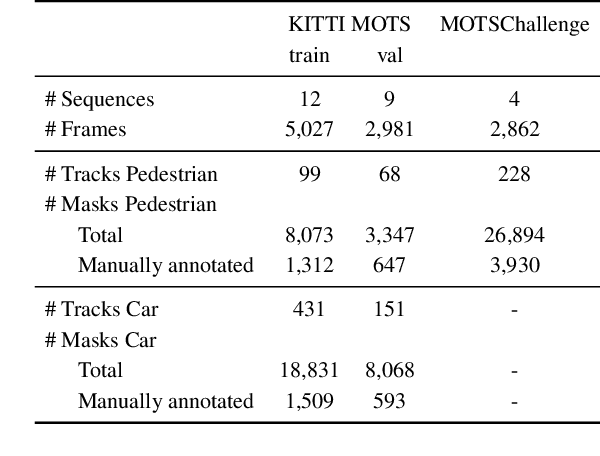
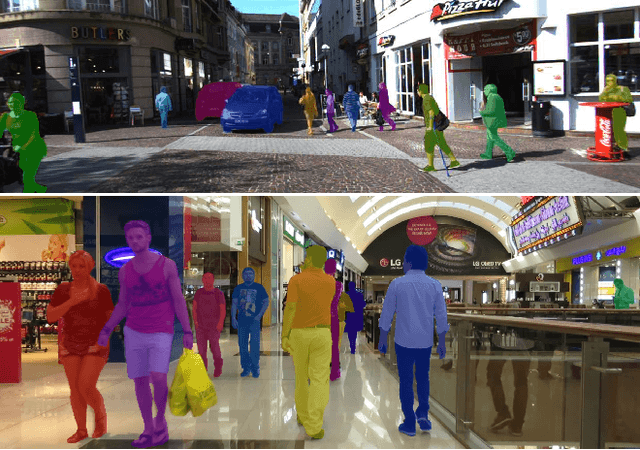
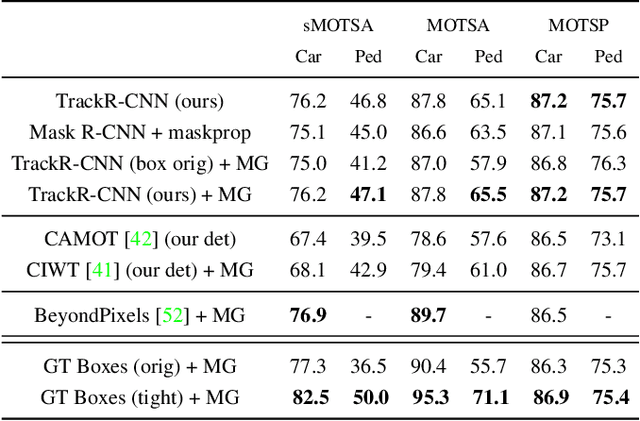
Abstract:This paper extends the popular task of multi-object tracking to multi-object tracking and segmentation (MOTS). Towards this goal, we create dense pixel-level annotations for two existing tracking datasets using a semi-automatic annotation procedure. Our new annotations comprise 65,213 pixel masks for 977 distinct objects (cars and pedestrians) in 10,870 video frames. For evaluation, we extend existing multi-object tracking metrics to this new task. Moreover, we propose a new baseline method which jointly addresses detection, tracking, and segmentation with a single convolutional network. We demonstrate the value of our datasets by achieving improvements in performance when training on MOTS annotations. We believe that our datasets, metrics and baseline will become a valuable resource towards developing multi-object tracking approaches that go beyond 2D bounding boxes. We make our annotations, code, and models available at https://www.vision.rwth-aachen.de/page/mots.
* CVPR 2019 camera-ready version
 Add to Chrome
Add to Chrome Add to Firefox
Add to Firefox Add to Edge
Add to Edge